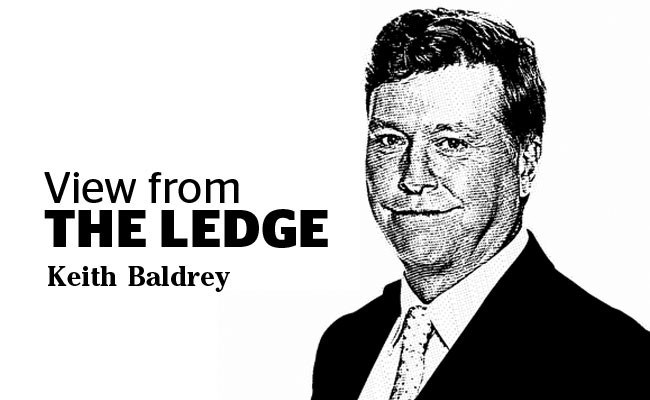For all the noise and drama that regularly engulfs our provincial political scene, it’s worth remembering that when British Columbians actually go to the polls we display a remarkable consistency when it comes to the actual outcome of elections.
And that consistency is good news for the B.C. Liberals and bad news for the NDP and the Greens. Of course, with six months to go before the next provincial election campaign formally begins a lot of strange things can happen that may cause the electorate to dramatically shift, but it rarely happens.
That consistency has meant relatively few ridings trade hands during elections, moving from one party to another.
For example, in the 2013 election just 10 ridings out of 85 switched political allegiances. The B.C. Liberals took five seats that were held by the NDP, while the New Democrats took four seats that had elected B.C. Liberal MLAs (the Green Party took a riding from the B.C. Liberals) in 2009.
That was the election that was supposed to go the NDP’s way, according to the polls at the time. But the electorate – just as it has done time and time again – for the most part voted the way they had in the 2009 election, which again saw relatively few ridings trading hands from the previous election (a feature, as well, of the consecutive elections in 1979, 1983 and 1986).
In fact, there have only been four B.C. elections in the past 40 years that have departed from the norm: the NDP’s victories in 1991 and 1996, the B.C. Liberal runaway romp in the 2001 vote, and the NDP’s comeback (while still forming the Opposition) in 2005.
The NDP’s wins were made possible by a significant split among voters who usually could be counted on to vote for the so-called free enterprise coalition party (first the Social Credit party, and then the B.C. Liberal Party).
In 1991, the NDP actually received a lower percentage of the vote than it did when it lost in 1986, yet won because the dying Social Credit party and the resurgent B.C. Liberals split the free enterprise vote, a much greater pool of voters.
Fast forward to 1996, when the NDP won chiefly because the B.C. Reform party took almost 10 per cent of the vote, allowing the New Democrats to win more seats despite having fewer votes than the B.C. Liberals.
With the B.C. Conservative Party showing few signs of life, the prospect of a split on the centre-right seems unlikely.
So keeping in mind our historical voting consistency, and the absence of that vote split, and you can see the big challenge the NDP faces in order to score a victory next spring.
About 50-55 seats can be considered “safe” for either of the two parties (about 30 for the B.C. Liberals and about 20 for the NDP), which leaves the election coming down to about 25-30 ridings. The NDP needs to pick up about 10 seats currently held by the B.C. Liberals without losing a single one of the ones they currently hold, which would constitute a historical first (with no vote split).
In 2013, the B.C. Liberals won just 13 ridings where the margin of victory was less than 10 per cent (anything larger makes it very hard for another party to win it). To achieve victory, the NDP will have to win at least 10 of them.
That means winning seats in Surrey, Delta, Port Moody, South Vancouver, Burnaby and at least one riding in the Interior. But at the same time, the NDP will also have to hold onto about eight seats it won by the slimmest of margins in 2013 (such as ridings in Coquitlam, Burnaby, Vancouver and Vancouver Island).
In other words, the New Democrats have precious little margin of error. Pretty much everything must break their way.
As a result, the B.C. Liberals’ biggest enemy may not be the NDP, but complacency within their ranks. If their voter base stays home because they think the outcome is a foregone conclusion, disaster could befall them.
As I mentioned earlier, anything can happen in the next six months. But history shows whatever crazy stuff may happen, it usually doesn’t change this province’s voting patterns.
However, there’s always a first time for everything. And that’s exactly what New Democrats have to be telling themselves over the next six months.
Keith Baldrey is chief political reporter for Global BC. [email protected]
What are your thoughts? Send us a letter via email by clicking here or post a comment below.



